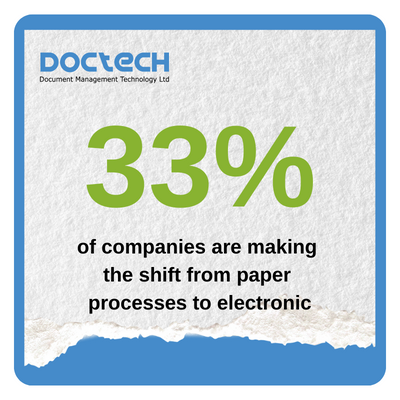Businesses in the UK must comply with various legal requirements around document retention, whether associated with tax, employee data or business records.
Safeguarding sensitive company information is vital as organisations that don’t comply, and depending on severity, can harm their reputation, bottom line or even face criminal damages.
It’s important to have a document retention policy in place as a way to keep track of legal requirements. It ensures no confidential information is kept longer than it should be and provides a destruction date for all official documents.
Storing documents for the right length of time means they don’t take up unnecessary space, they are available for audits and accessible to address any liability issues.
No matter the company size or industry, managing document retention is essential for quality and compliance. What needs to be kept will differ depending on product, service or industry. Food manufacturers for example will have different document types compared to a retail outlet.
A document retention policy should cover the storage and retention of the following documents:

Keeping on top of document retention can be a huge task. With multiple document types that have various retention rules, all starting at different times, how do you manage it?
Maybe you use an Excel spreadsheet for document tracking, which in itself is another document to have to control and update. Or perhaps information is saved across folder structures that clearly show the creation or deletion date. Either way, both are time consuming and open to error.
For example if you’re deleting a 2019 CV folder from the network, how do you ensure these CVs aren’t still in email inboxes or saved to someone’s desktop?
We’ve spoken to companies where an Office Junior is sent to look through paper files to make decisions on what needs to be kept or destroyed. Not only is this a poor use of their time, but they could mistakenly destroy or keep information they shouldn’t.
When it comes to employee records, how would the Office Junior easily know who was a current or past employee, and therefore which rule to apply to their documents. Not only that, but employee records should not be easily accessible to anyone other than HR or Management.
When managing retention rules you should consider whether your systems (if any) and processes are good enough. A dedicated document management system can securely and easily manage documents, but you also need to ensure staff follow business rules around document storage.
With our solutions, deletion workflows can be easily applied to document. Upon storage, the system is set to know that six years on from the invoice date, that document type can be deleted. Likewise after six months, any job applications removed. These rules can be applied to any document for any period of time and once set up, the system takes care of the rest.
Alternatively, organisations can decide to be notified when documents are approaching the deletion date allowing certain employees to intervene, if for any reason they shouldn't be deleted.
In this instance, a digital stamp can be added to the document, removing it from the deletion workflow. Typically, an employee would have to complete a mandatory comment to explain why they were stopping the deletion and be asked to set a new deletion date.
This means if businesses are asked during an audit why a document has been kept beyond its retention period, the reason and new retention date is clearly displayed on the document.
Managing document retention also helps businesses get organised, run more efficiently and take the right steps towards improving process optimisation.

In order for this to work, organisations need to have clear processes in place for retaining and deleting documents and employees must not save files locally. To aid with this, our document management solutions allow users to store documents straight from their inbox into the system.
They’re stored in a highly organised way and tagged with metadata to make searches simple. Users are able to search across a range of fields such the document type of ‘invoice’ and date ‘2020’ to bring up all relevant invoices. This makes the deletion much simpler as documents are grouped together and can be deleted as a batch.
Organisations will also have control over who (if anyone) is able to delete a document. This automatically prevents the unauthorised destruction of documents, improves compliance and enhances security.
Providing a simple way to manage document retention will save employees hours of wasted time packing up paper files to be sent for storage or working through network folders and manually deleting them. Digitally storing documents will save money that previously needed to be spent on paper, printing and off site storage.
Having a dedicated solution in place means document compliance can easily be achieved, removing the burden from staff and enabling greater productivity.
We’d welcome a chat with you if you’re struggling to efficiently manage document retention. We help our clients day in, day out with this requirement and we know we can help you.
With compliance laws in place such as GDPR and ISO 15489, and with regulations from HMRC and Companies House that need to be followed, can you afford to get it wrong?
Document tracking will differ from business to business and its importance will largely depend on industry, type of goods produced or services offered. The accurate tracking of information should not be over looked when it ...
The reliance on physical document storage can be a hindrance, slowing down productivity with time-consuming searches, while costing the business more than it should when expensive off-site storage facilities are required.
Large scale document scanning is fast, accurate and reliable with Kodak Alaris advanced scanning solutions. As an Elite Partner, DocTech can offer exclusive offers and savings on the Kodak S3000 Series and Kodak E1040 ...